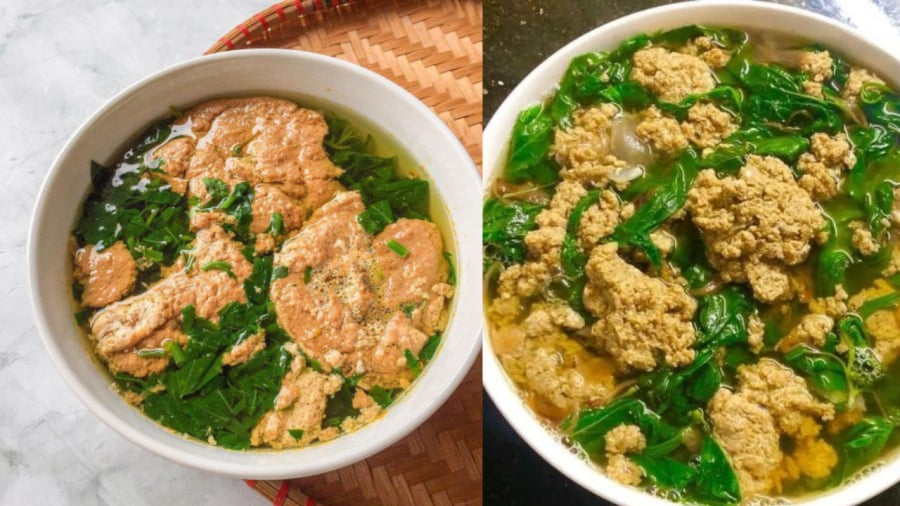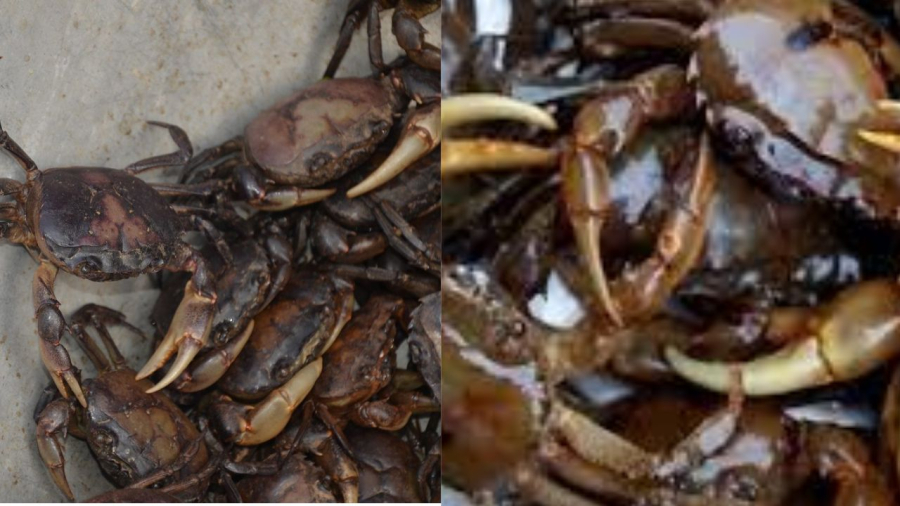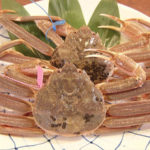Crabs are a type of seafood that are high in protein, calcium, and minerals. Crab soup with pickled eggplant is a common dish in many families during hot summer days. A delicious and visually appealing crab soup should have clear broth, large crabmeat chunks, no foam or floating crabmeat in the broth, sweet broth with no fishy smell, and fresh green vegetables. To make crab soup with large crabmeat chunks, follow these steps (Remember these 2 tips for firm crabmeat chunks and clear broth):

Crab soup with firm crabmeat chunks in clear broth
Choosing the right crab is crucial
Tasty crabs have a lot of meat and a rich flavor. Good crabs are ones that are meaty, not too young or too old. There are male and female crabs; male crabs have more meat, while female crabs have more roe and are fattier. When buying freshwater crabs for soup, many people prefer female crabs because the crabmeat chunks are firmer and softer than male crabs, and the yellow crab roe enhances the appearance of the soup. Regardless of whether you choose male or female crabs, select ones with hard, strong shells, and intact legs and claws, and crabs that move quickly.
When choosing a crab, flip it over and check if there are no barnacles on the belly and if the meat is full, not dented. If the belly is dented, has many bubbles, or the crab is pregnant, the crab will be thin and not have much meat. Crabs reproduce according to the moon cycle, so to enjoy delicious crabs, buy them at the beginning or end of the lunar month; crabs in the middle of the month tend to molt, making them thin and with less meat.

Good crabs should not be too young, should be strong, and have firm meat
Adding salt when grinding/pounding the crab will help firm up the chunks
– After cleaning the crab, remove the belly and shell, and rinse thoroughly to remove the black water and the fishy smell of the crab. If the crab is not rinsed, the remaining water in the belly and shell will give the soup an unpleasant odor.
– When grinding or pounding the crab, remember to add a few grains of sea salt. Salt is an essential ingredient that helps the protein in the crab form firmer chunks. It’s best to add salt right at the beginning of the grinding process. However, add it in moderation, so you can adjust the seasoning later to avoid making the soup too salty. Adding a little salt when grinding the crab also helps preserve the crab, especially if you bought it from the market.
– Pounding the crab by hand takes more time and can be messy, so many people avoid it, but if you have the time, pounding the crab by hand in a mortar and pestle will result in a more flavorful soup than grinding it in a machine.
– Scoop the crab roe into a separate bowl and remove the black liquid, leaving only the crab roe to avoid the fishy smell of the black liquid in the crab. Do not add the crab roe at the beginning of cooking because it tends to dissolve, making the broth cloudy.
Pay attention to the flame and add this ingredient to the crab soup for firmer crabmeat chunks
After grinding and straining the crab, put the pot of crab broth on the stove over medium heat, not too high and not too low. As it starts to boil, use chopsticks to stir once, in one direction, then keep the heat at medium, not too high and not too low. Do not stir while the crab chunks are forming, as this will break them apart.
Add egg: After stirring, let the crab chunks form on their own. If you’re making a large batch or want even firmer crabmeat chunks, add a beaten egg to the crab broth to help the crabmeat stick together and form larger chunks, resulting in a clearer broth. Eggs also help bind the crabmeat together, making the chunks firmer and the broth clearer. Adding an egg is especially helpful if you accidentally bought young crabs with soft crabmeat that is difficult to form into chunks.
When the crabmeat chunks have risen to the surface of the pot, remove them to a bowl. Do not let the crabmeat chunks boil for too long, as they will become tough and unpalatable, and when you add the vegetables, they will mix with the crabmeat, making the soup less visually appealing.
Once the crabmeat chunks have risen to the surface, remove them to a bowl and wait for the crab broth to boil again before adding the vegetables. Jute leaves, Malabar spinach, and luffa are commonly used in crab soup because they cook quickly, so do not boil them for too long. If foam rises to the surface, skim it off. Season to taste.
Fry the crab roe to add flavor to the soup
There are 2 ways to use crab roe, depending on your preference
Some families prefer a light crab soup without the aroma of oil, so they do not fry the crab roe; instead, they add it to the soup when the crabmeat chunks have risen to the surface.
Other families prefer to fry the crab roe:
Heat a pan, add oil and onions, and fry until fragrant. Then add the crab roe and stir-fry until fragrant, adding a little seasoning. Pour the crab roe mixture over the bowl containing the crabmeat chunks.
Easy and Delicious Winter Recipes for a Cozy Night In
As the weather begins to cool down, why not get in the kitchen and prepare some hearty and delicious winter dishes? From beef in red wine sauce to braised fish and tomato sauce with tofu, these warm meals are sure to fill you with comfort and bring back fond memories. Making these treats is easy and worth it – so don’t wait to try them!






































